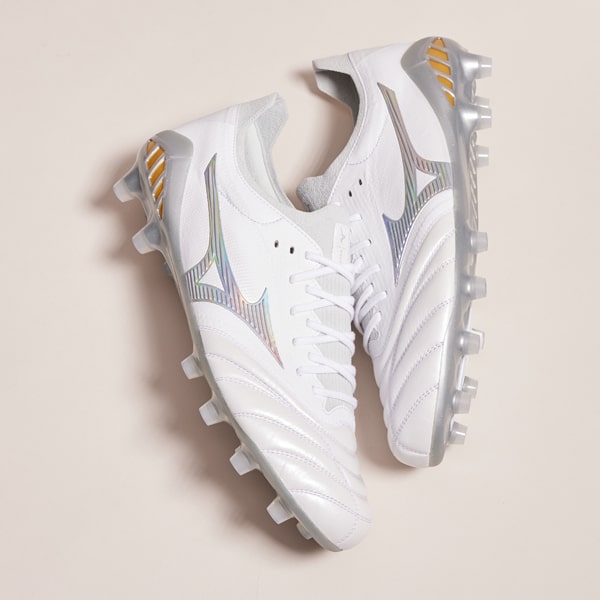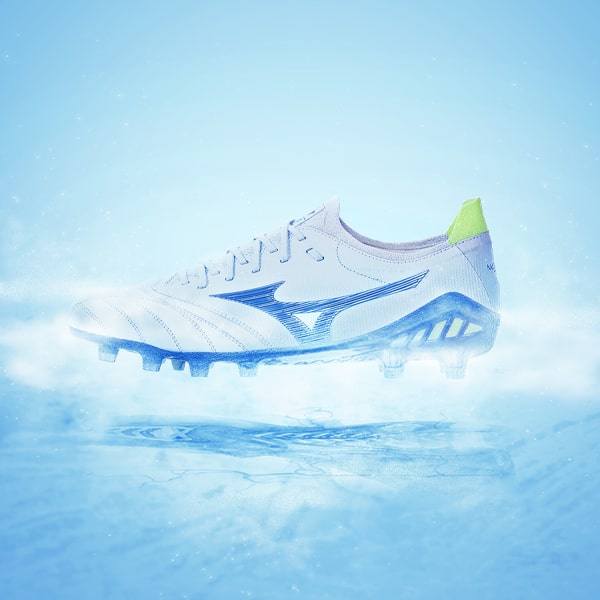Speed Needs Sole

It used to be that every football boot was fitted with a conical sole-plate, but time, design and engineering has changed this, most radically this can be seen in the Speed market. Whilst every brand strives for greater acceleration and traction, how their respective designers go about delivering this performance is quite remarkably different...
Each sole-plate featured below is fitted to one of the latest speed boots on the market. They've been designed by some of footballs' great design minds, yet whilst every brand has a relatively similar 'brief', you can see the end products bring into question how important sole-plates are to speed boots? 
Nike have really taken the concept of speed and acceleration to heart and not got caught up in a lightweight battle, their mission has been to how best transfer the player's movement through the boot and into the pitch. The results have included a spiked toe-off area at the fore, anchored studs on the outstep and the paw-like NikeSense studs. However, it remains to be seen if this is the future for Nike as the likes of Cristiano Ronaldo and Didier Drogba prefer their own custom plates.
Adidas looked at the sole-plate and when designing the adizero, decided this was an area they could dramatically reduce the boot's weight. Their lightweight SprintFrame has revolutionised boot design, but how affective the studs are in terms of grip and acceleration with their flat design, the jury is still out. They have however, also utilised a wider stud configuration for increased support and stability at the fore area. 
Completely unique to the adidas and Nike sole-plates, Puma have all tapered studs in a variety of shapes, with five studs at the rear. They use a mixture of materials including carbon fibre and pebax, and you can clearly see how the front toe area bends for acceleration. Interestingly, Puma have a solitary stud in the middle of the fore area, whilst Nike don't have one and adidas' is set further back.
The three sole-plates we've just looked at feature varying studs, however these Umbro GT's have the same shaped blade but laid out in a different configuration. Rather than turning, it seems the emphasis is on acceleration as six studs run across the boot to provide grip for a burst of speed. Umbro have also hollowed out their sole-plate, so it's not quite two-piece but the reduced material must mean reduced weight, but with an added bar running the length to provide additional support.

It almost comes as a surprise to scroll down the screen and come across a traditional conical studded sole-plate, considering the innovative shapes and configurations we've just looked at. But apply the philosophy 'if it ain't broken it doesn't need fixing', and perhaps that's the mentality Mizuno have applied. Whoever said there was anything wrong with a conical stud, they've served Pele, Maradona and Cruyff, some of the fastest most skilful players to have played the game, so they're good enough for Mizuno!
Take the performance of the classic conical sole-plate and add a twist - quite literally! Lotto have provided us with one of the most interesting sole-plates, because if you look at the Zhero Gravity boot as a whole, it's one of the most revolutionary on the market as it doesn't have laces. However, despite a fearlessness when it comes to design, Lotto have felt little need to alter the sole-plate. What they have added is a Twist'nGo stud a solitary stud under the big toe area which pivots when you turn and helps to reduce injury. Interestingly, Lotto are one of the few brands to publicly come out with university research applied to their sole-plate.
If you were to fuse the v1.11 SL and GT sole-plates, we think this Under Armour Blur Pro sole would be the result. The blades are the most smoothly shaped on the speed market, and whether this aids or hinders ground penetration we're unsure. Under Armour have made a concerted effort to place the studs as wide on the sole-plate as possible, to provide extra stability and support, but they've reduced material under the midfoot which is almost the opposite to what the adizero, v1.11 SL and Morelia Neo have.
We've saved potentially the most radical till last. Clearly the Pele Sports Trinity is unique in stud shape and that it only has three studs at the heel, but it's possibly the first sole-plate to claim to train your muscles as you play! Through laboratory and bio-mechanical testing in Germany, this sole-plate takes into account that no-one runs flat footed, and so the studs are shaped and positioned to compliment running gait. The studs are also stacked up five on the outstep and three on the instep, so the theory is there's less chance of rolling your ankle.
As with all these sole-plates, final judgment is reserved by those who wear the boots, so we'd love to hear your experiences of the different sole-plates/stud configurations and how you think they vary for speed. Conical, bladed or uniquely shaped, really how important are the different sole-plates to speed, acceleration and traction? Let us know your opinions, and share your thoughts with the boots community online, on Twitter and on Facebook.







